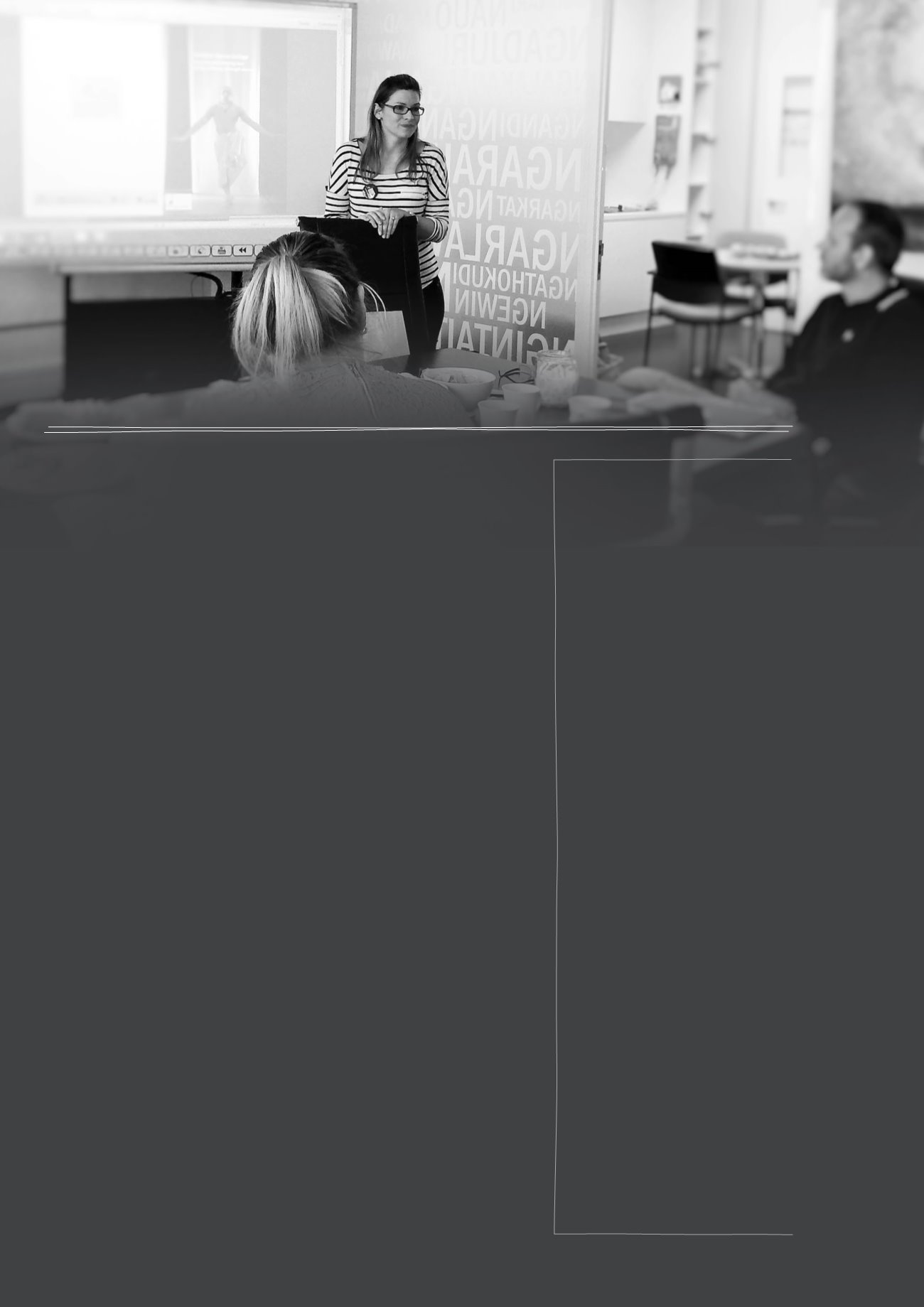

Nina Kordic from IAG applied for a
Jawun secondment in 2014 for two
reasons: ‘I was looking for a way
to give back to the community,
and I wanted to do something that
would stretch me professionally.’
She was seconded to NAISDA
Dance College, Australia’s first
Indigenous dance school, on
the Central Coast of New South
Wales. ‘My project was to define
the “DNA” of the college,’ said
Nina. ‘It definitely developed my
critical thinking and strategic
thinking skills, and also my ability
to influence.’
On returning to work after six
weeks, Nina’s manager Carmen
Ashcroft, Senior Manager of
Talent & Diversity, gave her a
couple of days to readjust. For
Nina, this was extremely valuable.
‘The secondment is such a big
experience, there is so much
personal and professional growth.
It’s important for an organisation to
be mindful of that change.’ Carmen
had kept in touch with Nina during
her secondment and ‘had a strong
sense as to the sort of re-entry
she would need. The re-entry is
often as big an adjustment as
the immersion experience. It was
important for Nina to have an
opportunity to internalise what
she was processing. That time
helped her to consolidate her
understanding about her own
elements of change.’
Carmen said conversations
between manager and secondee
on re-entry are important to help
capture and maximise learnings.
‘I always say to people, “You’re
coming back with a host of new
and different experiences.
I want you to start thinking about
how they help inform your thinking
back here, and how you will best
be able to share and utilise your
new-found insights in the team
and the business at large.”’
By acting as a sounding board
for Nina, Carmen knew ‘she came
back with some different views
to the ones she held when she
left, but she could articulate them
and I could say to her, “How will
that play out differently at work?
How will that make you approach
something differently, influence
differently?” Allowing Nina time to
think and process and then use me
as a sounding board meant that we
could springboard some of those
experiences to greater effect.’
Carmen also looked for
opportunities for Nina to apply her
learnings. ‘There was an upcoming
project and I thought, “Here’s a
vehicle for Nina to practise and
exercise what she’s learnt.”’ It was
a culture project that allowed Nina
to draw directly on her Jawun
experiences. Carmen explained,
‘It was a live opportunity for her
to apply what she’d learnt.’
Nina’s professional growth soon
became obvious within the
business. ‘Other managers have
observed the changes in Nina,’
said Carmen. ‘She’s more confident
and at ease with stakeholder
engagement and management.’
Based on Nina’s performance,
Carmen recommended her for
‘three rather large pieces of work’
on a new talent framework rollout
and has continued to see her
growing in the workplace.
CASE STUDY
Transitioning back into the workplace
Nina Kordic from IAG presenting at NAISDA Dance College
while on secondment, 2014.
Photo: Fran Whitty
Maximising effectiveness
on return to work
In researching this report, three
elements emerged as key to a
successful transition back into the
workplace post-secondment:
• Time to process the transition.
Managers who supported
individuals (through coaching
or mentoring) to reflect on their
secondment experience and how
their altered perceptions may
affect them in the workplace
found that individuals could more
fully appreciate their internal
response to the experience,
readjust effectively to ‘regular
work life’, and demonstrate
new capabilities.
• Opportunity to openly share
learnings.
Secondees whose
manager encouraged them
to share their experience with
colleagues in the form of
presentations to leaders and
peers were able to articulate
how their learnings applied to
the business, engage others
in the benefits, and help to
communicate secondment
opportunities to others.
• ‘Stretch assignments’ to apply
learnings.
Secondees who had
opportunities to apply learnings
through leading or taking an
active role in assignments that
would stretch them to a new
level of performance were able
to demonstrate capability build
to leaders and colleagues outside
of their normal circle of influence.
This built greater understanding
of the value of the program
among senior leaders and
gave secondees visibility on
talent radars.
40


















